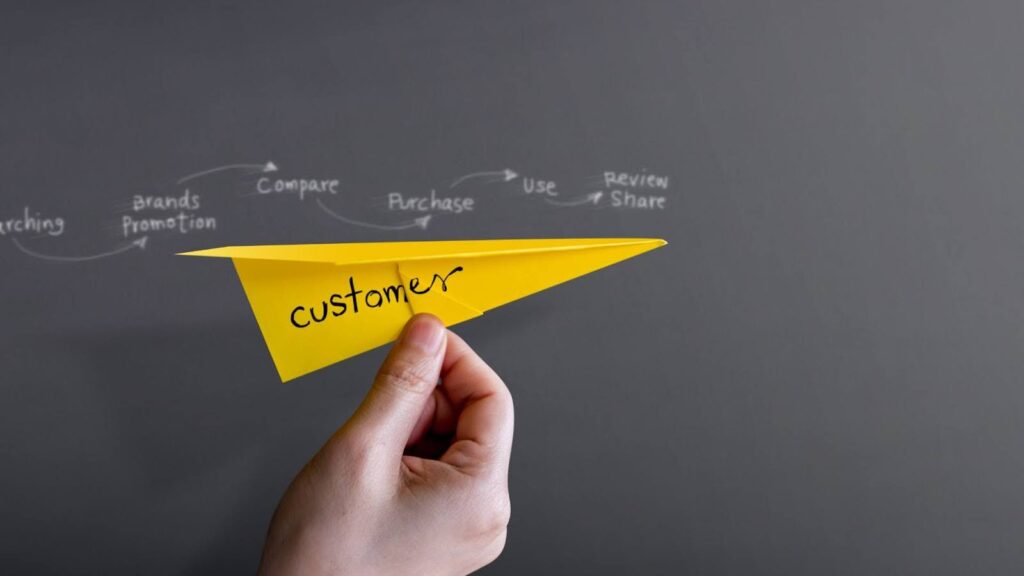Tools to Design Seamless Customer Journeys – From Prospects to Brand Advocates

Customer is king’ is a cliched but highly relevant statement in today’s world. Why? For starters, customers are spoilt for choices. For every product and service they seek, there are at least 10 solutions available in the market. As a business what do you do to beat the competition? Simple, make them feel special. And how do you achieve it? By carefully designing a successful customer journey. In this article, we are going to dive into this popular term often used in the sales and marketing world. Plus we are going to highlight some of the popular tools useful in streamlining different stages of a customer journey. What is a customer journey? In simple words, it is the complete experience a customer has with your brand. It typically includes interactions across all the channels, devices, and touchpoints. From the time they come to know about your brand till the time they recommend it to others, every step is part of a customer journey. In other words, a customer journey encompasses an entire customer lifecycle – from awareness to loyalty. Key stages of a customer journey (Customer POV) There are 5 stages in a typical customer journey, and we are going to classify them into the following 3 categories – Before purchase This phase starts with the customer looking to improve their business. They may face a pain point such as a lack of productivity or efficiency in their team. Initially, they do not know how to solve these pain points. But then comes a trigger where they discover an opportunity to solve them. It could be sales numbers going down or customer complaints surging. This is also the stage where the customer starts searching for a solution to their problem. In this initial search, they will come to know about the best solutions to their problems, including yours. This is often called the awareness stage of the customer journey However, this often leads to a “long list” of potential solutions. During purchase In this phase, the customer converts the long list into a shorter one by doing a thorough brand review. They will consider your service as a potential solution to their pain point. This is called the consideration stage. They will contact you and the other shortlisted vendors to give a demo. Post-demo, the solutions will be reviewed and if you have succeeded in convincing them, your solution will be chosen. This is called the purchase stage. The implementation process begins officially. Post-purchase This is the phase where implementation is complete and the solution is up and running. For you, this stage involves training all the users and giving them access to an account manager for support (when they need it). You continue to follow up and help the customer reach their goals and ensure that they continue to partner with you. This is the retention stage. If you have succeeded in offering the best experience to the customers, they will become loyal to your brand and become brand advocates. This stage is called the advocacy stage. Challenges in designing a customer journey Here are some of the key challenges typically encountered by businesses while designing a customer journey – Challenge #1 – Unable to accurately map how customers move through the journey It is not easy to collect and interpret customer data. This is true when you do not have the right tools at your disposal. Most businesses lack clear insights into how their customers will behave. They also do not know their preferences and pain points. Without such information, it becomes difficult to craft a journey that aligns with business needs. Challenge #2 – Unable to create a consistent experience across all channels Your customers will interact with you via social media, websites, stores, and customer service. It is not easy to ensure consistency in messaging, tone, experience, and quality across all these touchpoints. Lack of consistent experience across all channels will impact the brand recall and you might miss out on key opportunities. Challenge #3 – Unable to personalise the journey It is important to personalise the journey for different types of customers. However, scaling this across a large customer base can be overwhelming, particularly for small businesses. Most businesses struggle to implement effective segmentation. They also fail to adopt personalised content due to limited resources or a lack of right tools. Challenge #4 – Unable to track the effectiveness of the customer journey Most businesses are able to identify relevant KPIs and use them to measure success. However, they struggle to connect these metrics back to the specific stages of the customer journey. They consider it complex, especially with fragmented data systems. This is particularly true, when they do not have the right tools at their disposal. If you carefully notice these challenges, you will find the common thread linking all of them is the lack of right tools to design the customer journey. To help you in this regard, we are going to take a look at different tools in the Salesforce SSOT ecosystem that can not only overcome the above challenges but also streamline the whole customer journey. Marketing tools used to streamline customer journey Here are some of the key marketing tools you can adopt in the Salesforce ecosystem to streamline the ‘before purchase’ phase of customer journey – Salesforce Marketing Cloud This is the most important tool you would need in the before purchase phase. It lets you effortlessly manage customer engagement across different channels including common ones like email, mobile, social media, and ads. With this tool at your disposal, you can also personalise your marketing campaigns and automate workflows. The best part – you can gain deep insights into customer behaviour allowing you to create tailored, data-driven campaigns. The following tools can be integrated with Salesforce to streamline the customer journey in the before purchase phase – Demandbase Salesforce Integration: It is a popular Account-Based Marketing (ABM) platform. Using it, you can target high-value accounts. It is adept

